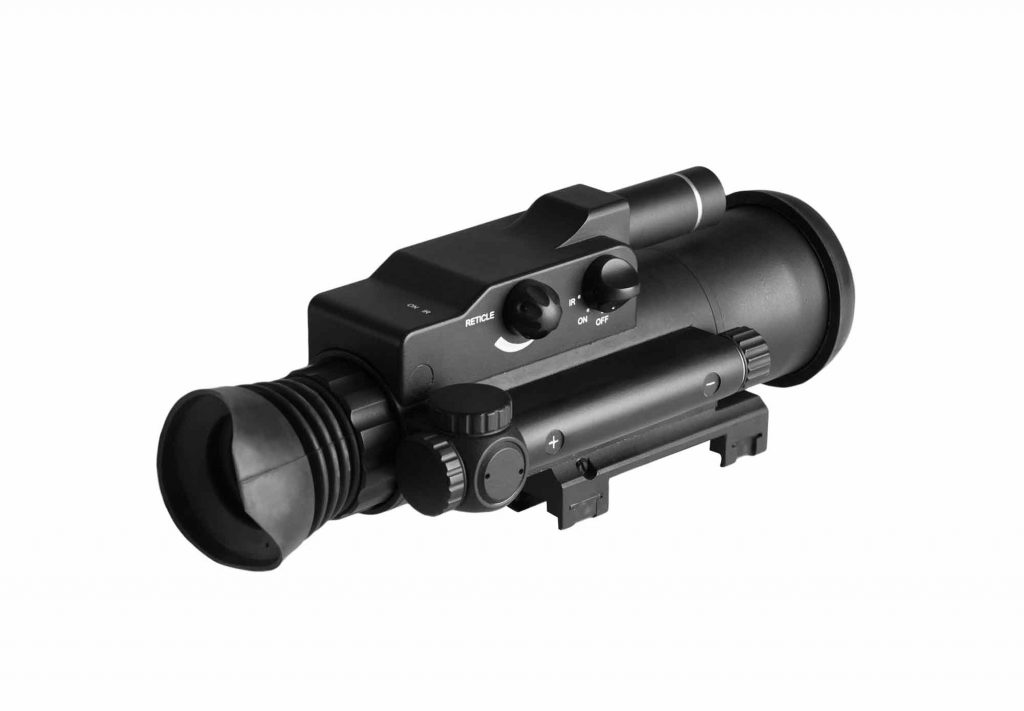Monoculars have in the recent past become very popular and an alternative to binoculars. While there are loyal fans for binoculars, the monocular will tend to be ideal in various fields for many varied reasons.
What is a night vision monocular and what is its use?
While the binoculars have two primary lenses one being able to cover each eye, the monoculars have one primary eyepiece. They are modified telescopes for refracting because just like the refracting telescope, it uses lenses and not mirrors. The monocular tend to also use prisms where the light passes through.
One of the main advantages of using monocular instead of the telescopes and binoculars is that they tend to have a design which is lightweight, compact, and portable. This is what makes them be convenient to move with them around and use for longer periods of time without having to become uncomfortable or fatigued.
You can use them even if you are visually impaired to enable you to view objects which are at a distance be it a presentation in a boardroom or an event which is happening in the stadium. If visions between your eyes are varied, they can be very helpful in balancing your sight.
Originally, the night vision monoculars were first utilized by the marine and military operations. Other activities which they might tend to be useful include:
- Hunting
- Viewing at large auditorium events
- Bird watching
- Viewing when at art museums
- Scouting
- Exploring caves
- Security
- Observation of wildlife
- Nighttime navigation
- Camping
- Rescue and search missions
- Surveillance
- Fishing/boating

It is important to remember that, the monoculars which were originally used by the military are more expensive and harder to find than the many budget devices which are currently in the market. The easiest way to know if the monocular you are about to buy is a night vision or not is by checking if they rely on power source in order to be able to operate in infrared effectively. They also tend to be sturdier and bulkier than the normal compact type.
What to look for when purchasing a night vision monocular
There are several specifications which you will need to look at and consider when you are looking for a monocular that will be perfect for your specific use. There are those which have newer features available though the features are not 100% necessary. Some of the things which you need to look out for include:
Field of view and magnification: This is also true for telescopes and binoculars, the field of view and magnification are very important specifications which you will need to consider. The magnification refers to how much of an image of what you are viewing is able to get enlarged by your lens. Magnification which is good is not only how big the image becomes, but also it is about the limits that it can have on an enlarged image which will still be quality.
This is true especially when it comes to the low-end models. In most instances, the magnification is sold with large numbers but in actual sense, it is poor quality, producing views which are blurred without any details. That is the reason why the optical quality and quality of the make is as important as the magnification
For a lightweight quality monocular, good magnification can start from 6X all the way to 8X which should be enough for most of the day to day use. Monocular which is of a quality make, which have 9X to 10X magnification can be used in all types of situations due to the fact that they provide better views and are stronger. The views have brighter images and offer better clarity. You should remember that the best come with a cost and will be less comfortable due to the fact that they are heavier if you use it for an extended period of time.
Magnification and field of view tend to be linked. The field of view in simpler terms is the amount of image you can see at once at a certain period of time. You can visualize it as a small window which can show you a narrow view of the world outside. And for a larger one, a large window which will provide you with a larger view.
Whenever you point a monocular at something which is at a distance using higher magnification the image can be zoomed, which will then leave you with a field view which is narrower. When you are using a magnification which is lower, you will have a wide field of view. For a monocular which has a wide field of view, even when at higher magnifications should be the one which you will need to consider.
Lens coating and size of the primary lens
When you purchase the monocular, you will be able to see two numbers displayed on it. If the numbers are 3x30mm, the first number 3x is a representation of the power of magnification of the monocular. The 30mm in the example is a representation of the primary lens in millimeters. The lens size plays a vital role in how wide your field view will be and how bright, clear and detailed your images will be.
With the size of the lens, bigger means that you will be in a position to view more images which are detailed as long as the optics are of high quality. But it also means that the monocular might end up being too heavy and bulky if you are using it for longer periods of time.
The coating on the lenses of the monoculars is at times overlooked. If you get a monocular which is on the high end, it should be coated with a finish which is quality and it should be anti-glare. It should have multi-coated lenses with an antiglare which will not diminish or obscure the clarity of your view. For low end monocular, you will find them when they are coated without an anti-glare.
